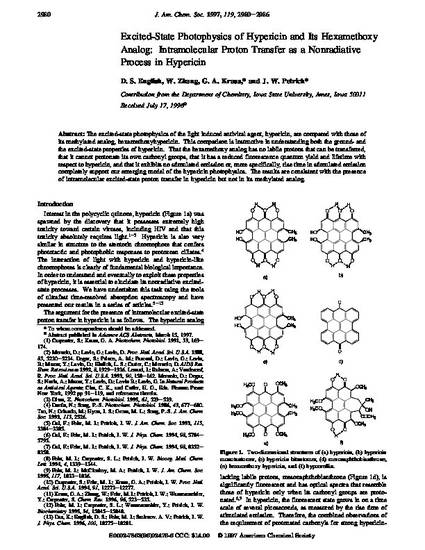
The excited-state photophysics of the light induced antiviral agent, hypericin, are compared with those of its methylated analog, hexamethoxyhypericin. This comparison is instructive in understanding both the ground- and the excited-state properties of hypericin. That the hexamethoxy analog has no labile protons that can be transferred, that it cannot protonate its own carbonyl groups, that it has a reduced fluorescence quantum yield and lifetime with respect to hypericin, and that it exhibits no stimulated emission or, more specifically, rise time in stimulated emission completely support our emerging model of the hypericin photophysics. The results are consistent with the presence of intramolecular excited-state proton transfer in hypericin but not in its methylated analog.
Available at: http://works.bepress.com/george_kraus/60/

Reprinted (adapted) with permission from Journal of American Chemical Society, 119(13); 2980-2986. Doi: 10.1021/ja962476h. Copyright 1997 American Chemical Society.